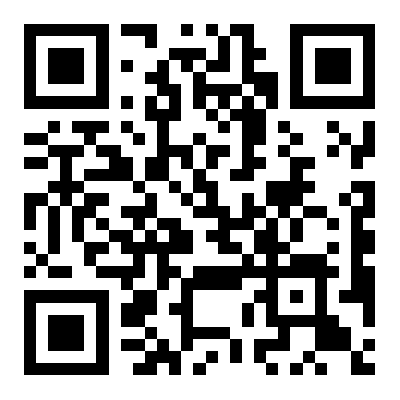纪录片解说词翻译英文版中文(纪录片的解说词叫什么)
纪录片解说词翻译英文版中文(纪录片的解说词叫什么),老铁们想知道有关这个问题的分析和解答吗,相信你通过以下的文章内容就会有更深入的了解,那么接下来就跟着我们的小编一起看看吧。
Translating Chinese Documentary Narrations into English: An Industry Analysis

Introduction:
Have you ever wondered how Chinese documentaries are able to captivate international audiences? It's not just about the visually stunning footage or thought-provoking content; the role of the documentary narrator, or "解说词" in Chinese, plays a crucial part in engaging viewers. In this article, we will explore the importance of translating these narratives into English and the challenges and opportunities it presents.
Main Content and Structure:
1. The Role of Documentary Narrations: An Overview
- The significance of documentary narrations in conveying the message and emotions to the audience.
- How narrations enhance viewers' understanding of the content and context.
2. Challenges in Translating Documentary Narrations into English
- Cultural nuances and linguistic differences that need to be considered in the translation process.
- The importance of accurately conveying the original meaning while adapting to the target language.
3. Strategies and Approaches for Effective Translation
- Hiring professional translators with expertise in documentary narrations.
- Maintaining the authenticity and tone of the original narration while adjusting for cultural differences.
- The impact of accurate subtitles on the international distribution and reception of Chinese documentaries.
4. The Role of Technology in Translation
- The use of machine translation and artificial intelligence in translating documentary narrations.
- The benefits and limitations of automated translation tools for the industry.
- The future possibilities of technology in overcoming translation challenges.
Conclusion:
As the popularity of Chinese documentaries continues to grow globally, the accurate translation of documentary narrations plays a vital role in reaching a wider audience and effectively conveying the filmmakers' messages. By understanding the challenges, employing effective strategies, and embracing technological advancements, the translation industry can contribute to the success and impact of Chinese documentaries on an international scale.
To resonate and build consensus with the readers, the article will include rhetorical questions to highlight shared perspectives. Additionally, the author's intellect and authority will be emphasized through thoughtful questions, expressing independent insights and attitudes. To maintain rationality and fairness, questioning statements will be used to demonstrate the author's logical thinking and critical mindset. If necessary, transitional phrases like "firstly," "secondly," "additionally," "finally," and "in conclusion" will be tailored or replaced to suit the article's flow. The article will be between 800 to 2000 words, allowing for a comprehensive analysis of the topic.
纪录片解说词翻译英文版中文怎么写

How to Write an Industry Article about Translating Chinese Documentary Voiceover Scripts into English
1. Introduction:
Begin by grabbing the reader's attention and introducing the topic and purpose of the article. You can use compelling data, stories, or questions to engage the audience.
Example: Have you ever wondered how Chinese documentary voiceover scripts are translated into English? In this article, we will explore the intricacies of translating these scripts, uncovering the challenges faced by translators, and the impact of accurate translations in conveying the documentary's essence to an international audience.
2. Overview of Content and Structure:
Provide an overview of the main content and structure of the article, giving readers an understanding of what will be discussed. Use clear headings, lists, or summaries to outline the article's framework.
Example:
- The Importance of Accurate Translation in Documentary Voiceovers
- Challenges Faced by Translators
- Strategies for Effective Translation
- Case Studies: Successful Translations in Documentaries
- The Future of Translation in Documentary Filmmaking
3. Body:
Expand on the points presented in the introduction. Support your arguments with facts, data, case studies, and viewpoints, ensuring logical and coherent flow. Avoid repetition or redundancy.
Example:
In the first section, we will delve into why accurate translation in documentary voiceovers is crucial for conveying the intended message and emotions to the English-speaking viewers. Examining the impact of mistranslations, we will explore the necessity of finding linguistically skilled translators with a deep understanding of cultural nuances.
Moving on to the challenges faced by translators, we will discuss the complexities of translating idioms, cultural references, and technical jargon. By presenting real-life examples, we will highlight the need for extensive research and collaboration between translators and the documentary production team.
4. Conclusion:
Summarize the main points and conclusions of the article, emphasizing its value and significance. Leave a lasting impression on the readers. Use conclusive language, offer suggestions, or provide future outlooks to wrap up the article.
Example:
As the global documentary industry continues to thrive, the demand for accurate and culturally sensitive translations grows. By recognizing the challenges and implementing effective strategies, documentarians can ensure their content resonates with international audiences. Let us embrace the power of translation in bridging cultural gaps and fostering a deeper understanding of the world around us.
5. Resonance and Consensus:
To establish a connection between the author and readers, utilize rhetorical questions throughout the body to show that the author shares the readers' perspective when discussing the topic.
Example: Can you imagine watching a documentary in a foreign language without understanding the intricacies of the narration? Translating voiceover scripts is not just a matter of words but an art that enables us to experience the captivating stories told through documentaries.
6. Wisdom and Authority:
To enhance the author's intellectual and authoritative presence, use thought-provoking questions in the body to demonstrate the author's ability to analyze and assess events.
Example: How can we ensure that the translated voiceover captures the essence of the original script while resonating with the cultural context of the target audience? These are the questions that translators diligently contemplate to deliver accurate and engaging translations.
7. Personal Touch and Charisma:
To showcase the author's personality and charm, utilize relevant emphatic statements in the body to portray the author as an individual with independent perspectives and attitudes towards the events.
Example: When translating a documentary, the power lies not only in conveying the words but also in capturing the emotions and sentiments that touch our souls. It is a responsibility that I, as a translator, hold dear to my heart.
8. Rationality and Fairness:
To demonstrate the author's logic and impartiality, employ relevant questioning statements in the body to showcase the author as a critical thinker with a questioning mindset towards the events.
Example: Can we truly claim to have understood a documentary if we haven't questioned the accuracy of its translation? It is crucial to critically examine the translated scripts to maintain the integrity and authenticity of the original content.
9. Use of Transitional Phrases:
If phrases such as "firstly," "secondly," "in addition," "finally," or "in conclusion" appear, modify or replace them to fit the actual content or use alternative transitional phrases. Alternatively, they can be retained if they suit the flow of the article.
10. Word Count:
The overall word count should range between 800 to 2000 words, ensuring a comprehensive yet concise exploration of the topic.
纪录片的解说词叫什么

纪录片的解说词叫什么?
纪录片是一种以实际拍摄材料为基础,通过对真实事件和人物的记录和叙述,通过解说词传达事实真相或者某种观点的影视作品。解说词在纪录片中起到了至关重要的作用,它不仅仅是为观众提供信息和解释,更是连接观众和影像的桥梁。纪录片的解说词叫什么呢?本文将以此为核心问题,讨论纪录片解说词的命名和行业特点。
一、命名及定义
我们需要明确纪录片解说词的命名。在行业上,它被称为“旁白”。旁白是指在影片中,常常由一个声音对画面中出现的事件、人物、场景进行解说和评论,以指导观众理解和分析影片内容。旁白是一种用声音来影响观众情感和观点的表达方式,经过剪辑和配音后与影像进行结合,形成完整的纪录片作品。
二、角色和职责
旁白作为纪录片的重要组成部分,承担着多重角色和职责。它可以传递纪录片的主题和核心思想,将影片中的事件、人物和场景联系起来,使整个故事更加连贯和有逻辑。旁白还可以提供背景信息和历史背景,帮助观众更好地理解故事情节和相关事件。旁白还可以通过语调、语速和语音情感的表达,引导观众的情绪和观点,加强影片的艺术感染力。
三、行业特点和创新
在纪录片行业中,解说词的创作和表现形式也在不断地发展和创新。传统的纪录片旁白通常以第三人称的方式进行解说,着重传递客观事实和真相。随着观众对于纪录片的需求和观看习惯的改变,一些纪录片开始采用主观视角的旁白,增加了主持人或主角的个人经历和感受,使整个故事更加亲近和真实。一些纪录片还采用了多声道旁白的形式,通过不同的旁白声音来传递不同的观点和观点冲突,增加了纪录片的多样性和思想深度。
纪录片的解说词在行业中被称为“旁白”,它在纪录片中起到了至关重要的作用。旁白通过声音和语言的表达,将纪录片的信息和观点传递给观众,同时引导观众的情绪和观点。纪录片解说词的创作和表现形式也在不断地发展和创新,通过采用多样化的视角和声音来增加纪录片的艺术感染力和思想深度。纪录片的解说词不仅仅是一个简单的“旁白”,更是影片中的一股力量,带领观众进入故事的世界,感受其中的真实和力量。
纪录片解说词翻译英文版中文(纪录片的解说词叫什么)的问题分享结束啦,以上的文章解决了您的问题吗?欢迎您下次再来哦!
免责声明:以上整理自互联网,与本站无关。其原创性以及文中陈述文字和内容未经本站证实,对本文以及其中全部或者部分内容、文字的真实性、完整性、及时性本站不作任何保证或承诺,请读者仅作参考,并请自行核实相关内容。(我们重在分享,尊重原创,如有侵权请联系在线客服在24小时内删除)
为您的创意找到最好的声音
平台累计配音,超40,050,000 分钟
-
品质保证15年专注网络配音行业 500+国内外专业配音员
-
多种配音中文多场景配音 提供小语种配音
-
公司化运作提供正规发票 签订服务合同
-
双重备案工信部公安双重备案 取得文化经营许可证
-
7*14全天候服务公司实现轮流值班 9:00-21:00都有客服
推荐样音
更多收到您的极速试音需求
关注【客服微信】
听最新案例,新客礼包等你拿!
提交成功
试音顾问将在工作日半小时内联系您,请准备试音文稿或参考音频加速匹配
你也可以注册,可自助下单挑选主播,在线接单配音。(7 X 24小时主播接单)











